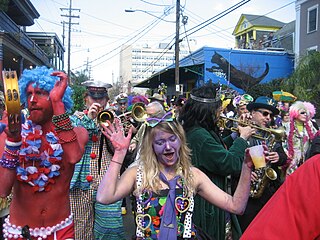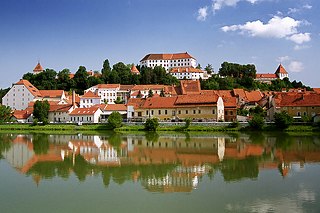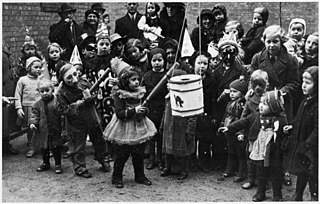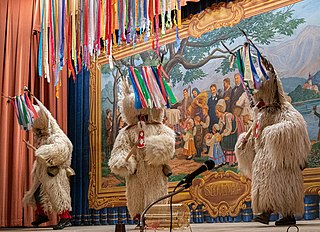
Mardi Gras refers to events of the Carnival celebration, beginning on or after the Christian feasts of the Epiphany and culminating on the day before Ash Wednesday, which is known as Shrove Tuesday. Mardi Gras is French for "Fat Tuesday", reflecting the practice of the last night of eating rich, fatty foods before the ritual Lenten sacrifices and fasting of the Lenten season.

Carnival is a Christian festive season that occurs before the liturgical season of Lent. The main events typically occur during February or early March, during the period historically known as Shrovetide. Carnival typically involves public celebrations, including events such as parades, public street parties and other entertainments, combining some elements of a circus. Elaborate costumes and masks allow people to set aside their everyday individuality and experience a heightened sense of social unity. Participants often indulge in excessive consumption of alcohol, meat, and other foods that will be forgone during upcoming Lent. Traditionally, butter, milk, and other animal products were not consumed "excessively", rather, their stock was fully consumed during Shrovetide as to reduce waste. This festival is known for being a time of great indulgence before Lent, with drinking, overeating, and various other activities of indulgence being performed. For example, pancakes, donuts, and other desserts are prepared and eaten for a final time. During Lent, lacticinia and animal products are eaten less, and individuals make a Lenten sacrifice, thus giving up a certain object or activity of desire.

Shrove Tuesday, Pancake Tuesday or Pancake Day is the day before Ash Wednesday, observed in many Christian countries through participating in confession and absolution, the ritual burning of the previous year's Holy Week palms, finalizing one's Lenten sacrifice, as well as eating pancakes and other sweets.

Cerkno is a small town in the Littoral region of Slovenia. It has around 2,000 inhabitants and is the administrative centre of the Cerkno Hills. It is the seat of the Municipality of Cerkno.

Ptuj is a town in northeastern Slovenia that is the seat of the Municipality of Ptuj. Ptuj, the oldest recorded city in Slovenia, has been inhabited since the late Stone Age and developed from a Roman military fort. Ptuj was located at a strategically important crossing of the Drava River, along a prehistoric trade route between the Baltic Sea and the Adriatic. The area is part of the traditional region of Styria and was part of the Austria-Hungarian Empire. In the early 20th century the majority of the residents spoke German, but today the population is largely Slovene.

Styria, also Slovenian Styria or Lower Styria, is a traditional region in northeastern Slovenia, comprising the southern third of the former Duchy of Styria. The population of Styria in its historical boundaries amounts to around 705,000 inhabitants, or 34.5% of the population of Slovenia. The largest city is Maribor.

Slovene Americans or Slovenian Americans are Americans of full or partial Slovene or Slovenian ancestry. Slovenes mostly immigrated to America during the Slovene mass emigration period from the 1880s to World War I.

The Busójárás is an annual celebration of the Šokci living in the town of Mohács, Hungary, held at the end of the Carnival season ("Farsang"), ending the day before Ash Wednesday. The celebration features Busós and includes folk music, masquerading, parades and dancing. Busójárás lasts six days, usually during February. It starts on a Thursday, followed by the Kisfarsang carnival on Friday, with the biggest celebration, Farsang vasárnap on the seventh Sunday before Easter Sunday; the celebration then ends with Farsangtemetés on the following Tuesday. These traditional festivities have been inscribed on the Representative List of the Intangible Cultural Heritage of Humanity of the UNESCO in 2009.

Bojan Adamič a.k.a. Master, Slovene Partisans nom de guerre Gregor, was a well-known Slovene composer of jazz, the Slovenian song festival music, and particularly film scores. He was also an avid photographer, interested particularly in carnival figures from Ptuj.

Fastelavn is a Carnival tradition in the Northern European, and historically Lutheran, nations of Denmark, Norway, Sweden, Iceland, Latvia, Estonia, Faroe Islands, as well as Greenland.

The Carnival of Binche is an annual festival held in Binche, Hainaut, Belgium, during the Sunday, Monday, and Tuesday preceding Ash Wednesday.

Haloze is a geographical sub-region of Slovenia. It is in the northeast of the country, in the Styria region.

The Carnival of Madeira is an annual festival held forty days before Easter, that ends on Shrove Tuesday the day before Ash Wednesday. On certain days of Lent, Roman Catholics traditionally abstained from the consumption of meat and poultry, hence the term "carnival," from carnelevare, "to remove meat."

The Carnival of La Bañeza, in the province of Leon, is a festival declared of national tourist interest that began to gain importance and fame at the beginning of the 20th century during the repression under Franco, due to the prohibition of concealing one's face or wearing a costume. The main characteristic of La Bañeza's carnival is the absence of a costume competition with prizes and monetary compensation for participating, which may occur in carnivals elsewhere. Most of the city dedicates themselves wholeheartedly to the festival, passing on interest through generations. In many cases, participants prepare a year in advance, searching for accessories, fabrics, masks and acts they will perform, motivated by a "carnival feeling", lived during those days. Given this, the disorganized carnival is becoming increasingly popular, dressing up outside of parade hours, or on days without events, in the workplace, etc. looking to surprise and amaze the citizens and visitors.

Traditions of Italy are sets of traditions, beliefs, values, and customs that belongs within the culture of Italian people. These traditions have influenced life in Italy for centuries, and are still practiced in modern times. Italian traditions are directly connected to Italy's ancestors, which says even more about Italian history.
The Folklore of Belgium is extremely diverse and reflects the rich legacy of cultural and religious influences which have acted on the region throughout its history, even before the establishment of the nation of Belgium in 1830. Much of Belgian folklore is unique to the region in which it is commemorated. Many aspects of folklore are manifested in public processions and parades in Belgian cities; traditions which are kept alive for the amusement of locals and tourists alike.
Carnival is the most important and well-known festivity celebrated in Tarazona de la Mancha, in the Spanish province of Albacete.

Slavic carnivals are known under different names in various Slavic countries: Bulgarian: Сирни заговезни, Прошка, Поклади, romanized: Sirni zagovezni, Proshka, Pokladi; Macedonian: Прочка, romanized: Pročka; Russian: Масленица, Мясопуст, romanized: Maslenitsa, Myasopust; Polish: Ostatki, Mięsopust, Zapusty; Czech: Masopust, Šibřinky, Ostatky; Slovak: Fašiangy; Slovene: Mesopȗst, Pust, Pustni teden, Fašnk; Serbian: Покладе, Проћка / Poklade, Proćka; Croatian: Pust, Poklade, Mesopust, Fašnik. They are traditional Slavic festivals related to the period of carnival.

Cleveland Kurentovanje is a Slovenian-American festival celebrating the end of winter and the beginning of spring, taking place annually the weekend before Ash Wednesday, in Cleveland, Ohio, mirroring Kurentovanje in Slovenia.

Kurentovanje 2023 is the upcoming 63rd Ptuj carnival, organized by Ptuj Tourism Public Institute.


























